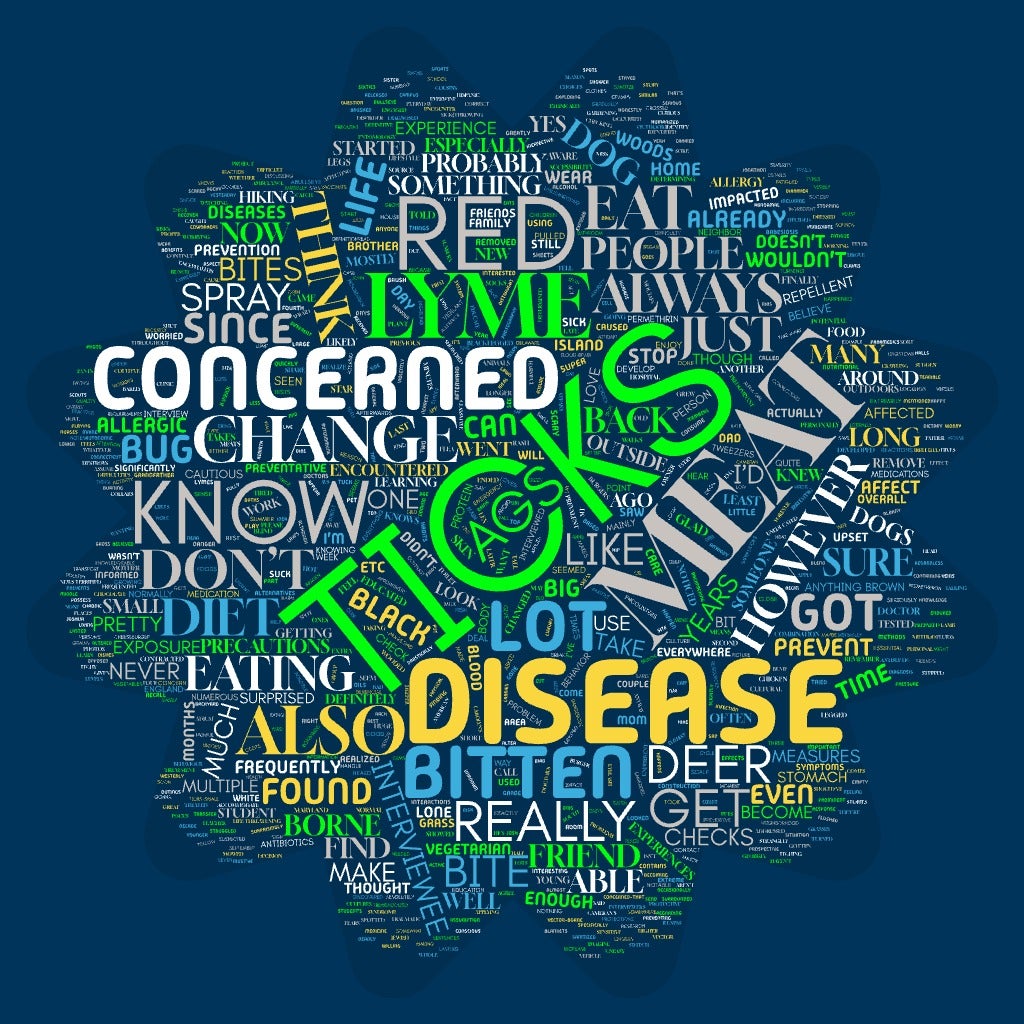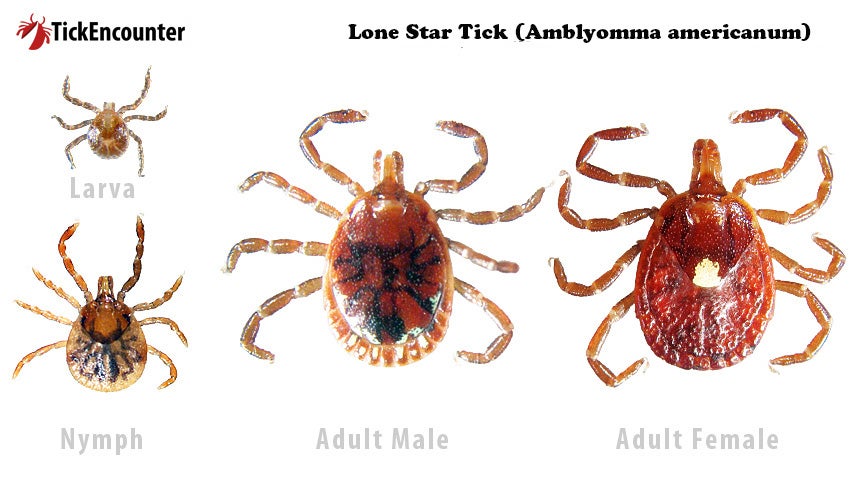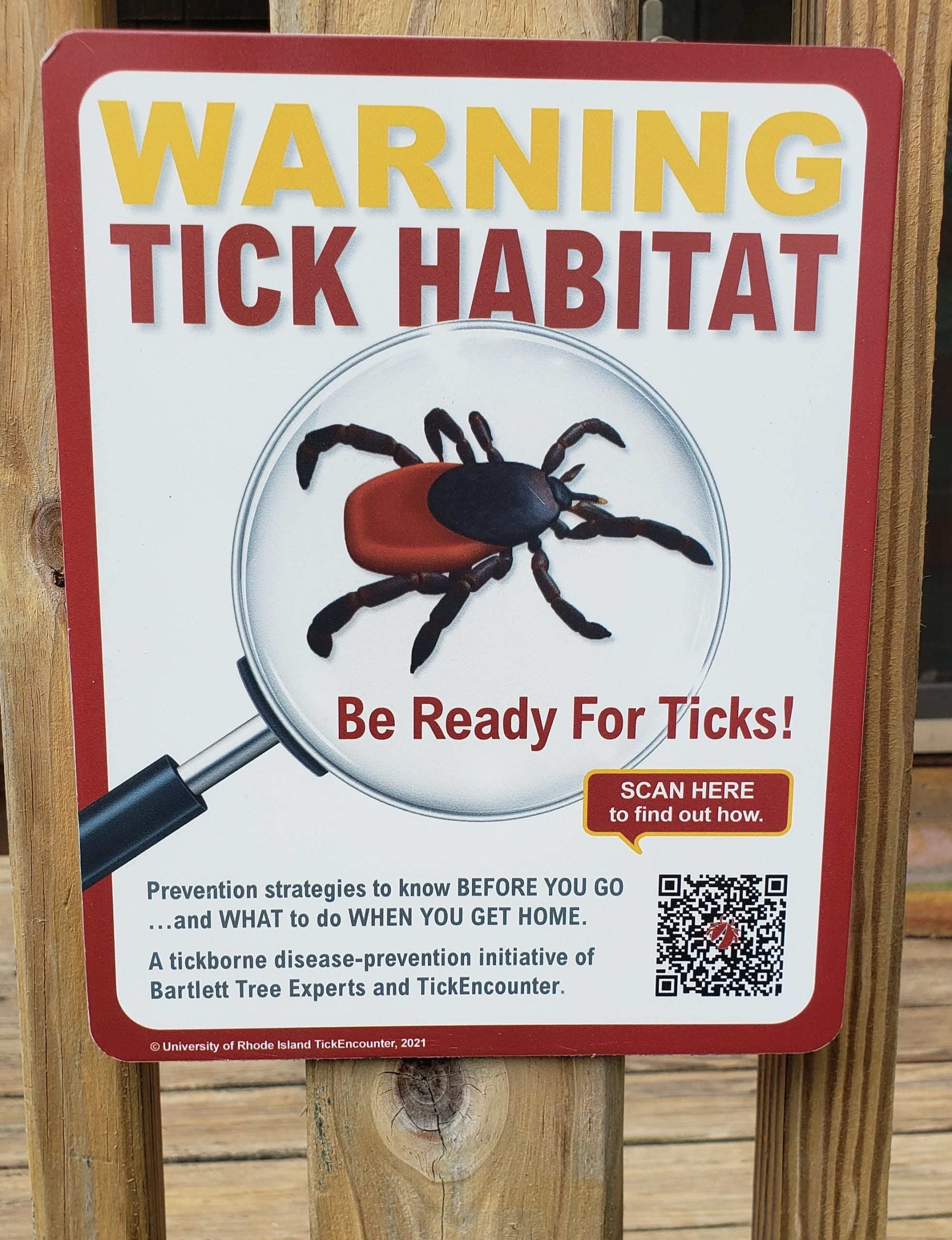
By Valerie MacDonald (April 2025)
Valerie MacDonald, a senior in the Honors Program at the University of Rhode Island, lead a research project in collaboration with Dr. Thomas Mather and his team to explore public awareness of Alpha-Gal Syndrome (AGS) and the growing presence of lone star ticks in southern New England. As part of this effort, students were surveyed to learn more about their personal experiences with ticks, their understanding of AGS, and the preventive steps they take (or don’t take) when it comes to tick exposure. This blog post highlights some of the key findings from those conversations—and what they reveal about how prepared people are for the changing tick landscape in our region.
Many participants had firsthand tick experiences, often involving blacklegged ticks, American dog ticks, or lone star ticks found in wooded areas, yards, or on pets. Some reported serious outcomes like Lyme disease or Babesiosis. AGS awareness was low—only 37% had heard of it—but those affected described severe, life-altering symptoms and diet restrictions. Even participants unfamiliar with AGS expressed concern, noting a red meat allergy would significantly impact their lives, especially due to cultural or nutritional reasons. While some took precautions, many did not, assuming treatment would be easy. The findings highlight a clear need for improved public education on tick-borne diseases beyond Lyme, especially as our climate continues to change along with our tick exposure.
Survey Results Broken Down
Tick Experience
Overall 85% of people interviewed eat red-meat to some degree but more than half had never heard of Alpha-Gal Syndrome (AGS). Additionally 55% of students had personal experience with being bitten by a tick and shared their tick stories with us.

- Exposure: People frequently encountered ticks after outdoor activities, especially in wooded or grassy areas
- Types of Tick: Most common types of ticks to bite folks were blacklegged ticks, American dog ticks, and lone star ticks, typically of the smaller life stages presumably nymphs
- Severity: Notable cases involved serious symptoms, hospitalizations, or chronic conditions such as Lyme disease, Babesiosis or Alpha-Gal Syndrome
- Pets: Pets, especially dogs, were a frequent source of exposure, often after outdoor activity
Behavioral Changes: Be TickSmart!
After finding a tick folks varied in their responsiveness of behavior changes to prevent future bites. On a scale of 1 to 5, 1 being “no changes” , and 5 being “very cautious”, we received a variety of answers but the average response was a 3.2.
- Vigilance: Many increased vigilance through tick checks and using bug spray
- Prevention: Some adopted additional measures like lawn maintenance, pet treatments, or tick removal tools
- Variation: A few remained unconcerned or unchanged in behavior; others became more fearful or cautious
Concern About Developing AGS
When proposed with a hypothetical scenario of “If you developed AGS, how concerned would you be?”most respondents expressed concern about developing AGS, with impact varying based on dietary habits and ability to adapt.
- Concern: There was high concern among most respondents due to potential disruption to diet and lifestyle
- Adaptation: Some felt they could adapt by switching to alternative proteins like poultry, fish, or plants, but noted possible challenges
- Minimal Impact: Minimal concern from vegetarians or pescatarians, though some still wary of health risks or less obvious sources
Overall Findings and Conclusions
The survey results reveal a complex picture of tick awareness and Alpha-Gal Syndrome (AGS) understanding in southern New England as our risk of encountering lone star ticks increases.
- Limited Awareness: While tick encounters are common, many individuals—especially students—remain unaware of AGS or underestimate the full range of risks posed by ticks.
- Cultural Relevance: The potential for AGS to disrupt diets resonated deeply, particularly in communities where red meat holds cultural or nutritional significance.
- Information Access: People rely on a blend of trusted medical sources and informal channels like social media for information, suggesting an opportunity for clearer, more consistent public messaging.
- Prevention Gaps: Despite personal or secondhand experiences with tick-borne illnesses, there remains a gap between awareness and consistent prevention behaviors, highlighting a need for targeted education and outreach.
Thank you to Dr. Alexis White, Kristen Pohl-Munro, Dr. Tom Mather, for the help in developing content, webpage design, and mentorship. Additionally thank you to the students in the Spring 2025 AVS/ENT 390H course who helped administer the surveys, and thank you to the individuals who agreed to be interviewed for this project.



